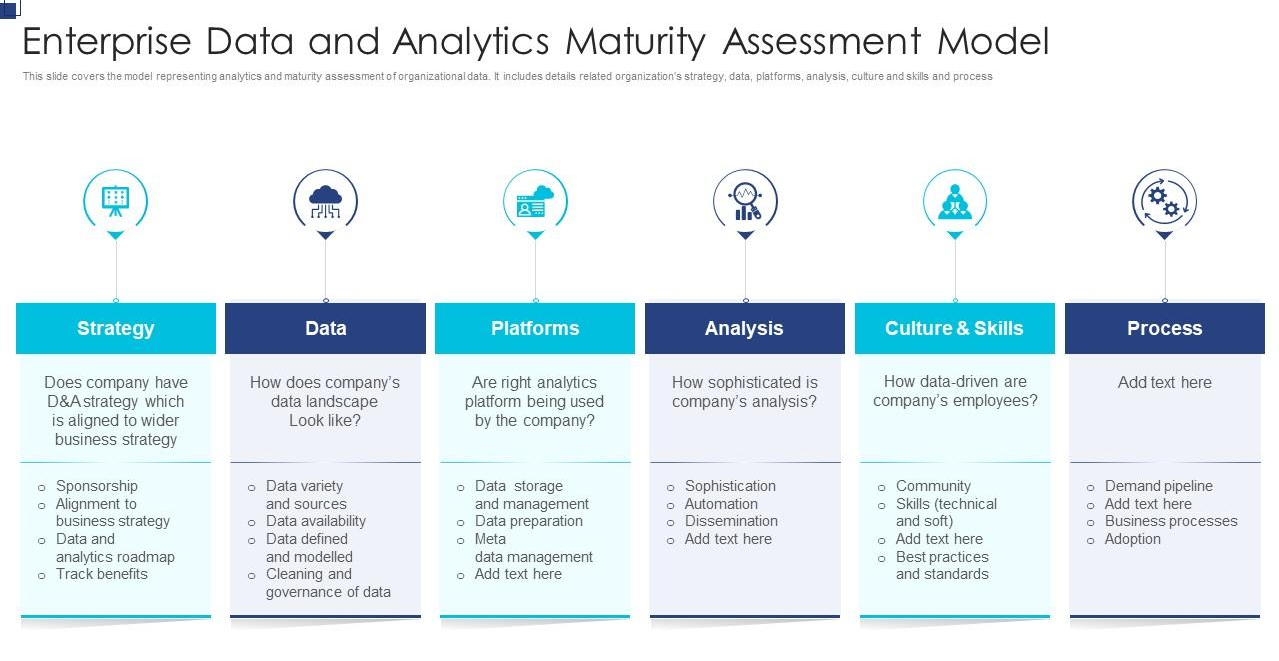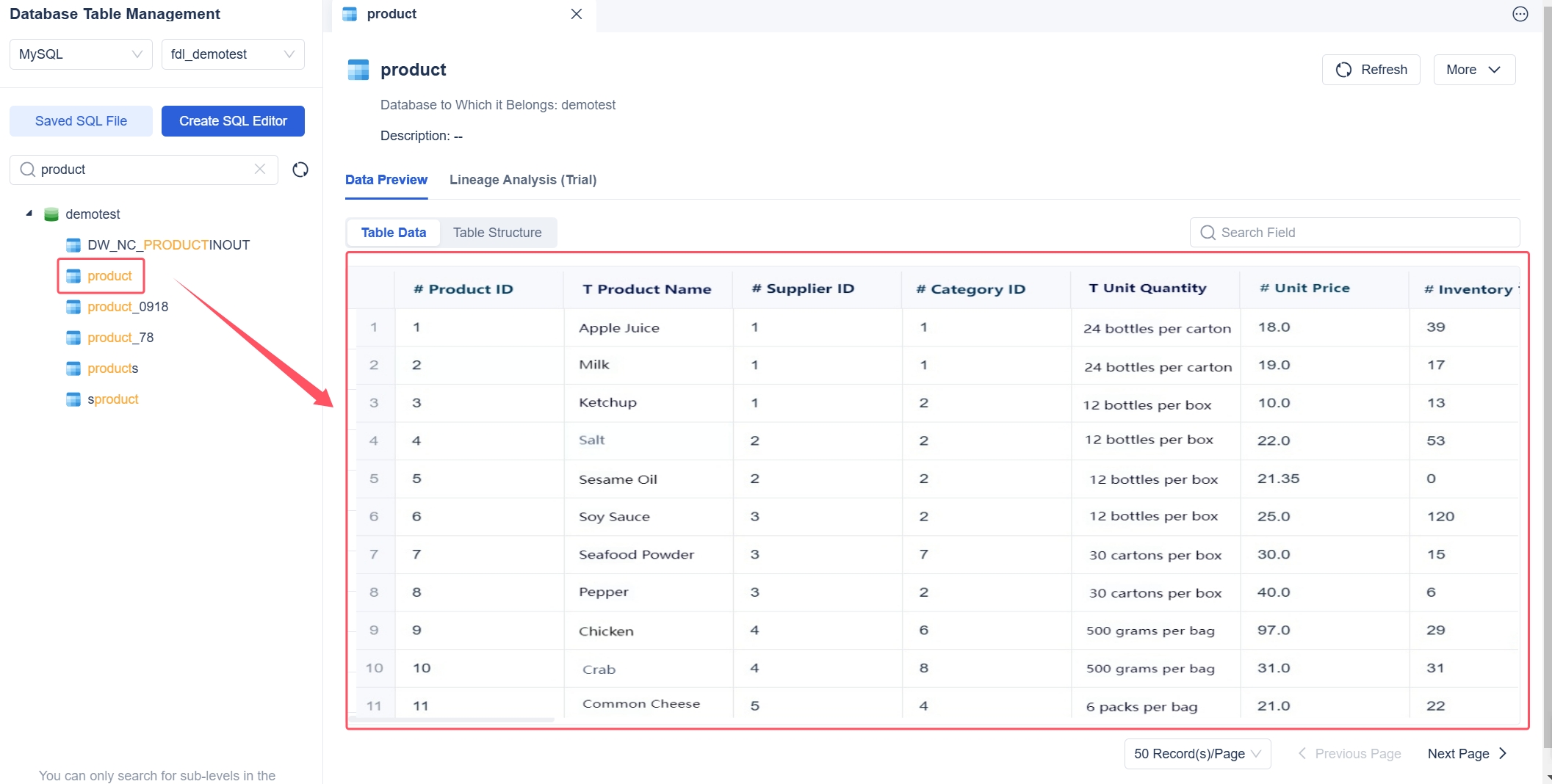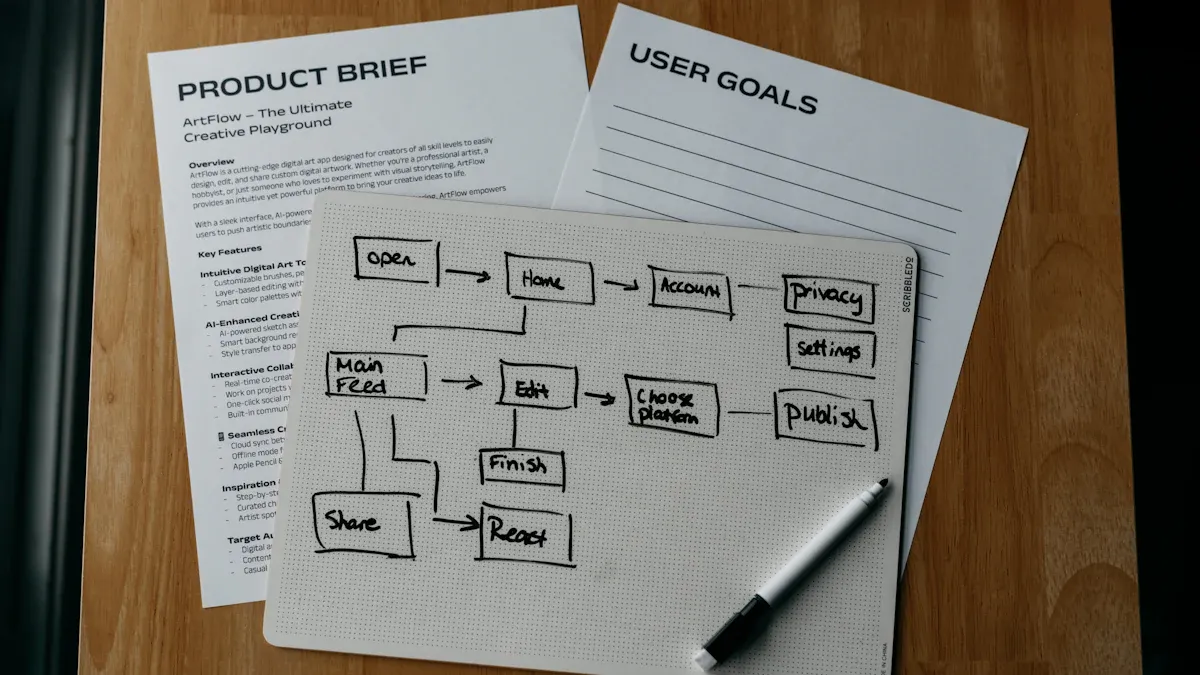A data maturity model gives you a clear way to measure how well your organization manages and uses data. You should care about data maturity because it helps you identify strengths and weaknesses in your current data practices. Many organizations use a data maturity model to improve data governance, data quality, and data-driven decision-making. Recent studies show that data maturity models boost performance by helping teams assess data capabilities, reveal process optimization potential, and promote data literacy. In 2024, nearly 74% of businesses adopted AI, with the rate exceeding 90% in data-mature organizations. FineDataLink offers a modern solution for integrating and transforming data, helping you advance your data maturity.
Data Maturity Model Overview

What Is a Data Maturity Model
A data maturity model gives you a structured way to measure how your organization manages, uses, and improves data. You use this model to assess your current data practices and set goals for future growth. Most organizations rely on a data maturity model to guide their journey from basic data collection to advanced analytics and data-driven decision-making.
You can find several widely recognized data maturity models in the industry. Each model offers unique levels and features, helping you evaluate your data capabilities and plan improvements. Here is a comparison of the most popular models:
| Model Name | Levels | Key Features |
|---|---|---|
| DAMA DMBOK | 6 (Initial to Optimized) | Guidelines across 11 knowledge areas, including data governance and quality. |
| CMMI DMM | 5 (Initial to Optimizing) | Covers six process areas, helping you evaluate capabilities and identify gaps. |
| IBM IDQ | 4 (Unaware to Proactive) | Focuses on governance, measurement, improvement, and culture of data quality. |
| Gartner DQMM | 5 (Unaware to Proactive) | Covers five dimensions of data quality, aiding in benchmarking against peers. |
| TDWI DQMM | 5 (Non-existent to Optimized) | Addresses six components of data quality, helping you plan improvement efforts. |
Each data maturity model differs in its approach to evaluating organizational data practices. You will notice that these models help you set clear goals, develop actionable roadmaps, and define assessment areas. The table below highlights the main aspects:
| Aspect | Description |
|---|---|
| Goal setting | You establish clear objectives for progressing through maturity stages, aiding strategic planning. |
| Roadmap development | You translate strategy into actionable steps with milestones, roles, and risk identification. |
| Assessment areas | You define specific domains of data management to evaluate, ensuring a comprehensive assessment. |
| Themes and dimensions | You use principles and criteria for assessment, ensuring consistency and clarity in evaluation. |
When you use a data maturity model, you gain a roadmap for improving data governance, data quality, and analytics capabilities. This process helps you identify gaps, prioritize investments, and foster a culture of data-driven decision-making.
Tip: Start by choosing a data maturity model that aligns with your business goals and industry standards. This will help you benchmark your progress and guide your data strategy.
Key Stages of Data Maturity
A typical data maturity model divides the journey into several stages. Each stage reflects how your organization manages and uses data. Understanding these stages helps you identify where you stand and what steps you need to take next.
Here are the defining characteristics of each stage in a standard data maturity model:
| Stage | Key Characteristics |
|---|---|
| Data Exploring | Data is collected but not consistently analyzed or integrated. No formal data governance exists. Decisions are made without measuring data-backed results. Data remains siloed across departments. |
| Data Informed | You invest in analytics tools and basic data management practices. Leadership promotes data literacy. Success metrics are established. Data access improves, and more employees use data in their work. |
| Data Driven | Data is accessible to all relevant teams. Widespread data literacy exists. You use data for operational and strategic planning. Insights optimize KPIs and drive business growth. Experimentation with data becomes common. |
| Data Transformed | Data is embedded in your organization’s culture. Employees actively use data in real-time. Predictive analytics inform long-term goals. Continuous improvement and innovation are driven by data insights. |
Organizations transition between these stages by focusing on several key actions:
- Strengthen data governance by implementing clear policies and ensuring data quality.
- Invest in scalable technology, such as cloud platforms, AI, and automation.
- Enhance analytics capabilities, moving beyond basic reporting to predictive and prescriptive analytics.
- Build a data-driven culture by training employees and encouraging data use in decision-making.
- Ensure compliance and security by adopting best practices for data protection and regulatory requirements.
You may face challenges when implementing a data maturity model. Common obstacles include resource allocation, data quality issues, cultural shifts, governance and compliance complexities, and scalability of data infrastructure. To overcome these, you should encourage experimentation with new technologies, view failure as a learning opportunity, and invest in continuous training for your team.
Note: Leadership commitment and a cultural shift towards data-driven practices are crucial for advancing through the stages of a data maturity model. Strategic investments in data infrastructure and ongoing employee development will help you achieve higher levels of data maturity.

Data Maturity Model Assessment
Assessment Methods
You need to understand where your organization stands before you can improve your data practices. A data maturity assessment helps you measure your current capabilities and identify areas for growth. You can use several methods to assess your progress with a data maturity model.
One common approach is to use surveys and structured frameworks. Surveys collect input from different teams and compare your practices to industry peers. Framework-based assessments use established models, such as DAMA DMBOK2, to provide a detailed analysis and help you create a roadmap for improvement.
| Assessment Type | Key Features | Purpose |
|---|---|---|
| Survey-based Assessments | Utilizes surveys to gather inputs and benchmarks against peer organizations. | Provides insights into current practices and capabilities, helping to identify gaps. |
| Framework-based Assessments | Employs structured models like DAMA DMBOK2 for analysis. | Offers a comprehensive view of data capabilities and informs the creation of a roadmap. |
You can also use industry benchmarks to compare your organization to others. Popular frameworks include the Industrie 4.0 Maturity Index, Smart Industry Readiness Index (SIRI), and data governance maturity models from DAMA and Gartner. These benchmarks help you see how your data maturity model aligns with best practices.
| Benchmark Framework | Description |
|---|---|
| Industrie 4.0 Maturity Index | A framework developed by Acatech to assess digital capabilities in manufacturing. |
| Smart Industry Readiness Index (SIRI) | A well-known assessment tool influenced by the Industrie 4.0 Maturity Index. |
| Data Governance Maturity Models (DAMA, Gartner) | Models that evaluate data governance capabilities across various domains. |
When you conduct a data maturity assessment, you should focus on several key areas:
- Data governance: Review your policies, structures, and accountability.
- Data quality, stewardship, and ownership: Check how you ensure accuracy and consistency.
- Metadata and data catalog: Look at your tools for transparency and discoverability.
- Data security: Evaluate your protection and compliance processes.
- Data sharing: Assess how well you share data inside and outside your organization.
- Data integration: Examine how you combine data from different sources.
- Change management: Review how you handle updates to data systems.
- Documentation: Check the quality and accessibility of your data documentation.
- Tools and technologies: Evaluate the systems you use for data management.
- Infrastructure and operations: Review the scalability and reliability of your data environment.
A data maturity assessment gives you a clear diagnosis of your current situation. You can see how your practices align with ideal standards. This insight helps you plan strategically and take the right steps to reach higher levels of data management.
Tip: Use a combination of surveys, interviews, and documentation reviews to get a complete picture of your data maturity model.
Using FineDataLink for Assessment
FineDataLink can help you move forward in your data maturity model journey. This platform supports real-time data integration and advanced ETL/ELT processes, which are essential for accurate data maturity assessment.
FineDataLink connects and harmonizes data from many sources. You can use it to break down data silos and ensure that your business intelligence reports rely on consistent and reliable data. This capability improves your overall data management and supports better decision-making.
Organizations like Marvel Kazakhstan have used FineDataLink to achieve real-time data integration. By transforming raw data into actionable insights, you can enhance your decision-making process and respond quickly to business needs.
| Capability | Impact on Data Analysis and Reporting |
|---|---|
| Data Integration | Consolidates data from multiple sources for accurate insights. |
| Real-time Synchronization | Ensures up-to-date information for informed decision-making. |
| ETL Processes | Facilitates efficient data extraction, transformation, and loading. |
You can leverage FineDataLink in several ways:
- Synchronize data across multiple tables in real time, reducing latency and improving data accuracy.
- Use ETL and ELT features to preprocess and transform data for building data warehouses.
- Develop and launch API interfaces quickly, making it easy to share data between systems.
- Integrate over 100 common data sources, including SaaS applications and cloud environments.
- Use the drag-and-drop interface to streamline data workflows, even if you have limited coding experience.
FineDataLink helps you automate data integration tasks, reduce manual errors, and scale your data infrastructure. By using this platform, you can support your data governance efforts and ensure that your data maturity assessment reflects the true state of your organization.
Note: FineDataLink's real-time data integration and low-code platform make it easier for you to manage, analyze, and improve your data practices as you advance through your data maturity model.

Benefits of Data Maturity Model for Organizations

Business Impact
When you adopt a data maturity model, you unlock measurable business outcomes that drive growth and efficiency. Organizations with higher levels of data maturity see clear improvements in decision-making, collaboration, and operational performance. The following table summarizes the most significant outcomes:
| Measurable Outcomes | Description |
|---|---|
| Improved Decision-Making | You make better choices based on data insights. |
| Faster Insight Cycles | You reduce the time needed to derive insights from data. |
| Enhanced Collaboration | Teams share data and work together more effectively. |
| Data Readiness | You ensure data is available and high in quality for analysis. |
| Business Intelligence | You track KPIs that reflect data-driven decision-making. |
| Analytics Capability | You evaluate how well your organization analyzes data. |
Mature organizations act on data quickly. Trust in data increases when you integrate systems and define ownership. Leadership begins to view data as a key driver of sustainable growth. As your data maturity model advances, you rely less on intuition and more on data analysis for decisions. This shift leads to smarter, faster choices and greater innovation.
Data maturity is crucial for your organization. It reflects your ability to manage and use data effectively. Higher maturity levels allow you to treat data as a strategic asset, which leads to better decision-making and innovation.
Improving Data Practices
Improving your data management practices is essential for reaching higher stages in your data maturity model. You need to focus on several best practices to ensure sustainable progress:
- Define clear data management objectives that align with your business goals and data strategy.
- Establish a strong data governance framework. Assign ownership and standardize access policies to maintain data quality and consistency.
- Ensure high data quality by implementing validation rules and monitoring processes. This keeps your data accurate, complete, and timely.
- Monitor data health and observability continuously. Treat all data management practices as parts of a unified strategy.
You can measure improvements in your data management practices by using frameworks like the Capability Maturity Model Integration (CMMI). This model helps you identify your current level and areas for growth. Key performance indicators such as cycle time reduction, customer satisfaction scores, and employee engagement metrics help you track progress over time.
Continuous improvement depends on regular data analysis. You set improvement goals and use metrics to identify areas that need attention. This approach ensures your data management practices evolve and support your organization’s long-term success.
Tip: Focus on building a culture that values data governance, data quality, and ongoing data analysis. This will help you maximize the benefits of your data maturity model and achieve lasting business impact.
FineDataLink in Data Integration For Data Maturity Model
Real-Time Data Sync
You need a solution that breaks down data silos and enables seamless integration across your organization. FineDataLink helps you achieve this by providing true bi-directional synchronization, which ensures real-time consistency for your data. You can rely on sub-second latency for immediate response to changes, making it ideal for mission-critical operations. The platform supports over 200 pre-built connectors, allowing you to configure integrations without writing code. This approach simplifies the process for non-technical users and ensures your data remains secure with enterprise-grade compliance standards.
FineDataLink’s real-time data sync capabilities allow you to keep your data consistent and up-to-date across all connected systems. This is essential for organizations aiming to advance through the stages of the data maturity model.
| Advantage | Description |
|---|---|
| True Bi-Directional Sync | Ensures real-time data consistency across connected systems, valuable for operational use cases. |
| No-Code Configuration | Simplifies integration for non-technical users with over 200 pre-built connectors. |
| Operational Focus | Designed for mission-critical operations with sub-second latency for immediate response to changes. |
| Advanced Security and Compliance | Meets enterprise-grade security standards, including SOC 2, GDPR, and HIPAA compliance. |
FineDataLink supports integration with a wide range of data sources. You can connect databases, APIs, files, and big data platforms, making it easier to manage and analyze data from diverse origins.
| Supported Source End Data Source | Supported Target End Data Source |
|---|---|
| Database | Database |
| API | API |
| File (CSV, Excel, TXT) | File (CSV, Excel, TXT) |
| Big data platform (SAP HANA, Impala) | Big data platform (SAP HANA, Greenplum) |

ETL/ELT Features
FineDataLink’s low-code platform streamlines complex data integration tasks. You benefit from a drag-and-drop interface that delivers efficiency ten times greater than traditional ETL methods. The intuitive web-based design makes it accessible for users without extensive technical skills. You can eliminate the need for script writing, which enhances development efficiency, especially in large projects.
| Feature | Benefit |
|---|---|
| Dual-core engine | Supports both ELT and ETL processes |
| Integration of data sources | Streamlines data management and analysis |
You can collect data from multiple sources, including relational and non-relational databases, interfaces, and files. FineDataLink enables non-intrusive real-time synchronization, ensuring your data remains timely and accurate. You can construct enterprise-level data assets at a low cost by relying on APIs for interconnection and sharing. The platform allows flexible scheduling of tasks and real-time monitoring, which reduces your operation and maintenance workload. Built-in Spark SQL lets you call scripts for customized solutions.
| Feature | Description |
|---|---|
| Multi-source data collection | Supports various data sources such as relational, non-relational, interface, and file databases. |
| Non-intrusive real-time synchronization | Synchronizes data in multiple tables or the whole database, ensuring time sensitivity. |
| Data service construction at low cost | Constructs enterprise-level data assets relying on APIs for interconnection and sharing. |
| Efficient intelligent operation and maintenance | Allows flexible scheduling of tasks and real-time monitoring, reducing O&M workload. |
| High extensibility | Built-in Spark SQL allows calling scripts like Shell script. |
| Efficient data development | Equipped with a dual-core engine (ELT and ETL processes) for customized solutions. |
| Five data synchronization methods | Provides methods based on timestamp, trigger, full-table comparison, full-table increment, and log parsing. |
| Security | Supports data encryption and decryption, with SQL injection prevention rules. |
| Process-oriented low-code platform | User-friendly and easy to start, contributing to high development efficiency. |
You can use FineDataLink for real-time analytics. The platform processes data as it flows in, supporting immediate insight generation. This capability helps you move forward in your data maturity model journey by enabling efficient data management and analysis.

Understanding and applying a data maturity model helps you unlock the full potential of your data. You gain practical benefits such as improved decision-making, cost savings, and enhanced data governance. Organizations that invest in data maturity see measurable growth and operational efficiency.
- You identify gaps in your data landscape and create a roadmap for improvement.
- Data-driven decisions become the norm, increasing your ROI and market share.
- FineDataLink supports your journey by enabling seamless data integration and real-time analytics.
| Recommendation | Description |
|---|---|
| Leadership Prioritization | Prioritize data initiatives and allocate resources. |
| Continuous Training | Enhance data skills through ongoing programs. |
| Investment in Data Tools | Use advanced platforms like FineDataLink for better integration. |
You can measure the ROI of your data initiatives by tracking KPIs, monitoring progress, and refining your strategy.

Continue Reading About Data Maturity Model
Enterprise Data Integration: A Comprehensive Guide
What is enterprise data and why does it matter for organizations
Understanding Enterprise Data Centers in 2025
Enterprise Data Analytics Explained for Modern Businesses
FAQ

The Author
Howard
Data Management Engineer & Data Research Expert at FanRuan
Related Articles

What is a data management platform in 2025
A data management platform in 2025 centralizes, organizes, and activates business data, enabling smarter decisions and real-time insights across industries.
Howard
Dec 22, 2025

Top 10 Database Management Tools for 2025
See the top 10 database management tools for 2025, comparing features, security, and scalability to help you choose the right solution for your business.
Howard
Dec 17, 2025

Best Data Lake Vendors For Enterprise Needs
Compare top data lake vendors for enterprise needs. See which platforms offer the best scalability, integration, and security for your business.
Howard
Dec 07, 2025



